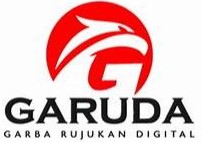Analisis Efisiensi Box Fermentasi Oncom Tahu dengan Sistem Arduino
DOI: https://doi.org/10.25077/metal.6.1.31-37.2022
Author(s)
Meri Rahmi (Politeknik Negeri Indramayu)Agus Sifa (Politeknik Negeri Indramayu)
Rachmatullah - (Politeknik Negeri Indramayu)
Abstract
Keywords
Full Text:
PDFReferences
M. Astawan, Sehat dengan Hidangan Kacang & Biji- Bijian, Jakarta: Penebar Swadaya, 2009.
F. Winarno, Kimia Pangan dan Gizi: Edisi Terbaru, Jakarta: Gramedia Pustaka Utama, 2008.
E. Y. Lestari, M. M. Diningrum and L. I. Haqiqi, "Pengembangan Nilai Tambah Ampas Tahu Bernilai Ekonomi melalui Pemberdayaan Masyarakat Desa Dadirejo Pati," Jurnal Pengabdian Abdimas, vol. Vol 23. No 2, pp. 175-181, 2019.
F. Mahyudi and Husinsyah, "Kontribusi Produk Sekunder Ampas Tahu Pada Usaha Industri Rumah Tangga Ud. Dua Putri Di Desa Gunung Antasari Kecamatan Simpang Empat Kabupaten Tanah Bumbu Provinsi Kalimantan Selatan," Ziraa'ah, vol. Volume 45 No.2, pp. 127-134, 2020.
Mawardi, T. M. Sarjani and Fadilah, "Pelatihan Pemanfaatan Limbah Ampas Tahu Sebagai Produk Pangan Layak Konsumsi Di Desa Meurandeh Dayah," Global Science Society: Jurnal Pengabdian Kepada Masyarakat, vol. Vol. 1 No 1, pp. 40-44, 2019.
Wirawan, G. Suliana and T. Iskandar, "Pemanfaatan Ampa Tahu Untuk Olahan Pangan Dari Limbah Pengolahan Industri Tahu Di Kelurahan Tunggul Wulung Kota Malang," Jurnal Akses Pengabdian Indonesia, vol. Vol 1 No 2, pp. 64-70, 2017.
H. Wibowo and E. Purnomo, "Pembuatan Alat Pengering Kerupuk Untuk Industri Kecil Pedesaan," Inotek, vol. 8, no. Nomor 2, 2004.
Suprapto, E. Daryanto and C. Situmeang, "Aplikasi Teknologi Pengering Tenaga Matahari Dan Biomassa Pada Produksi Ikan Asin Dan Ikan Asap Di Kecamatan Percut Sei Tuan Kabupaten Deli Serdang," Jurnal Pengabdian Kepada Masyarakat, vol. 23, no. No 1, pp. 1-7, 2016.
C. Anam, K. Muzaka and D. R. Pamuji, "Experimental Study On The Effect Of Cross Feed Of Surface Grinding On The Vibration And The Surface Roughness Of Hardened Tool Steel Ocr12vm," Rekayasa Mesin, vol. 11, no. 3, pp. 313-322, 2020.
 Article Metrics
Article Metrics
This article has been read : 470 timesPDF file viewed/downloaded : 329 times
Copyright (c) 2022 Meri Rahmi
View METAL's Stats

This work is licensed under a Creative Commons Attribution-NonCommercial-ShareAlike 4.0 International License.







